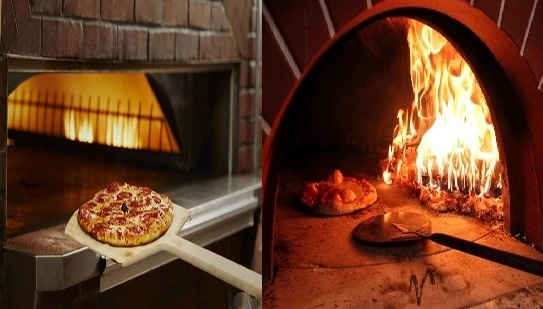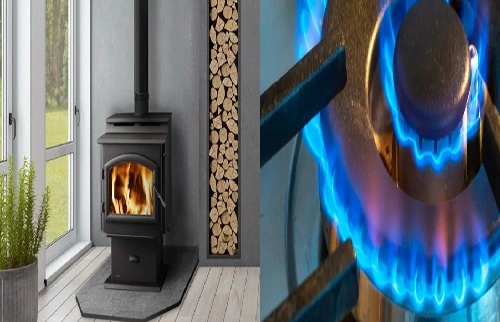Pizza lovers know that not all pizzas are created equal. When it comes to achieving that perfect crispy crust, bubbling cheese, and smoky flavor, brick oven pizza and wood-fired pizza are two of the most beloved methods of cooking. While these terms are often used interchangeably, they refer to distinct characteristics related to the cooking process, materials, and outcomes.
In this article, we’ll explain the differences between brick oven pizza and wood-fired pizza, explore their features, and help you understand what makes each style special. Whether you’re cooking at home or choosing a pizza spot, this guide will provide insight into these two popular pizza traditions.
What is a Brick Oven Pizza?
A brick oven pizza is cooked in an oven made primarily of brick materials. These ovens use bricks, clay, stone, or ceramic to construct a high-heat cooking environment, creating a unique texture and flavor in the pizza. Brick ovens can be heated using various fuel sources, including wood, gas, or electricity.
Key Characteristics of Brick Oven Pizza:
- High Heat Retention:
Brick ovens are designed to retain high temperatures (600–900°F) efficiently. The brick structure evenly radiates heat, ensuring quick and consistent cooking. - Crispy, Golden Crust:
The direct heat from the bricks crisps the crust while keeping the inside light and chewy. This helps achieve the ideal balance of texture. - Short Cooking Time:
Pizzas in a brick oven cook incredibly quickly—typically within 2–5 minutes. The intense heat ensures even cooking of the crust and toppings. - Fuel Flexibility:
Brick ovens can be powered by wood, gas, or electricity. While wood-fired cooking adds a smoky flavor, gas and electric models still provide the benefits of a brick oven without the wood-fired touch. - Versatility:
Brick ovens can cook more than pizza, including bread, meats, vegetables, and desserts.
What is a Wood-Fired Pizza?
A wood-fired pizza refers to pizza cooked in an oven that uses wood as the sole fuel source. While wood-fired ovens are often constructed from brick, clay, or stone, the defining characteristic is the use of burning wood to generate heat.
Key Characteristics of Wood-Fired Pizza:
- Smoky Flavor:
The burning wood creates natural smoke and aromas that infuse the pizza with a distinctive, rich, and slightly smoky flavor that is difficult to replicate with other fuels. - Intense Heat:
Wood-fired ovens can reach extremely high temperatures, typically between 700–900°F. The heat radiates from the wood fire and the oven walls to cook the pizza quickly and evenly. - Charred Crust:
The high heat and direct flame give wood-fired pizza a unique charred crust, known as “leoparding,” where small black spots form on the crust. This adds texture and flavor to the pizza. - Fast Cooking Times:
Similar to brick ovens, wood-fired ovens cook pizzas within 1–3 minutes, depending on the temperature and thickness of the crust. - Traditional Cooking:
Wood-fired pizza is often associated with traditional Italian pizza styles, such as Neapolitan pizza, where wood-burning ovens are a requirement.
Brick Oven Pizza vs. Wood-Fired Pizza: The Differences
While both brick oven and wood-fired pizzas share similarities, their differences come down to fuel source, flavor, and cooking techniques.
| Feature | Brick Oven Pizza | Wood-Fired Pizza |
|---|---|---|
| Oven Material | Brick, clay, stone, or ceramic | Often brick, stone, or clay ovens |
| Fuel Source | Can use wood, gas, or electricity | Exclusively uses wood as fuel |
| Flavor | Depends on fuel (neutral for gas/electric) | Distinct smoky, wood-infused flavor |
| Crust | Golden, crispy crust | Crispy crust with charred “leoparding” |
| Cooking Time | 2–5 minutes | 1–3 minutes |
| Heat Source | Radiant heat from bricks | Direct flame and radiant heat |
| Flexibility | Versatile with multiple fuel options | Traditional, focused on wood-fired flavor |
How Cooking Methods Affect the Pizza
- Flavor Profile:
- Brick Oven Pizza: If the brick oven uses gas or electricity, the pizza will lack the smoky flavor typical of wood-fired cooking. However, the brick’s ability to retain and radiate heat produces an evenly cooked, crispy crust.
- Wood-Fired Pizza: The use of burning wood adds a smoky, earthy flavor that sets wood-fired pizza apart. This is the hallmark of authentic Italian pizza.
- Crust Texture:
- Both methods produce a crispy crust thanks to the high heat. However, wood-fired pizzas often have the signature charred spots (“leoparding”), which add extra texture and a slightly smoky bite.
- Cooking Speed:
- Both brick and wood-fired ovens cook pizzas quickly, but wood-fired ovens typically operate at slightly higher temperatures, resulting in faster cooking times.
- Fuel and Convenience:
- Brick ovens offer flexibility with gas and electric options, making them easier to use for many homeowners.
- Wood-fired ovens require burning wood, which involves more effort, such as selecting hardwoods (like oak, hickory, or maple), managing the fire, and cleaning ash.
Which One is Right for You?
- Choose Brick Oven Pizza If:
- You want versatility in fuel options (gas, electric, or wood).
- You prefer a consistent, even bake without the added smoky flavor.
- You want a quick cooking time with a crispy crust.
- You need an oven that can cook other foods besides pizza.
- Choose Wood-Fired Pizza If:
- You love the distinct smoky flavor and charred crust that only burning wood can provide.
- You want an authentic, traditional pizza experience, such as Neapolitan-style pizza.
- You’re willing to manage the extra effort of maintaining a wood fire for a unique taste.
Conclusion
Both brick oven pizza and wood-fired pizza offer exceptional results, but their unique qualities set them apart. A brick oven is versatile, efficient, and works with various fuel types, making it ideal for modern kitchens and homeowners who want consistent performance. On the other hand, a wood-fired oven delivers an authentic, smoky flavor and rustic charm that pizza enthusiasts crave, providing a traditional cooking experience.
If you prioritize flavor and authenticity, a wood-fired pizza is unbeatable. However, if convenience and flexibility matter most, a brick oven pizza—with its ability to use multiple fuel sources—will meet your needs while still producing a delicious, golden-crusted pizza.
In the end, the choice comes down to your preferences, cooking style, and taste for tradition versus convenience. Either way, both methods promise an outstanding pizza experience!


